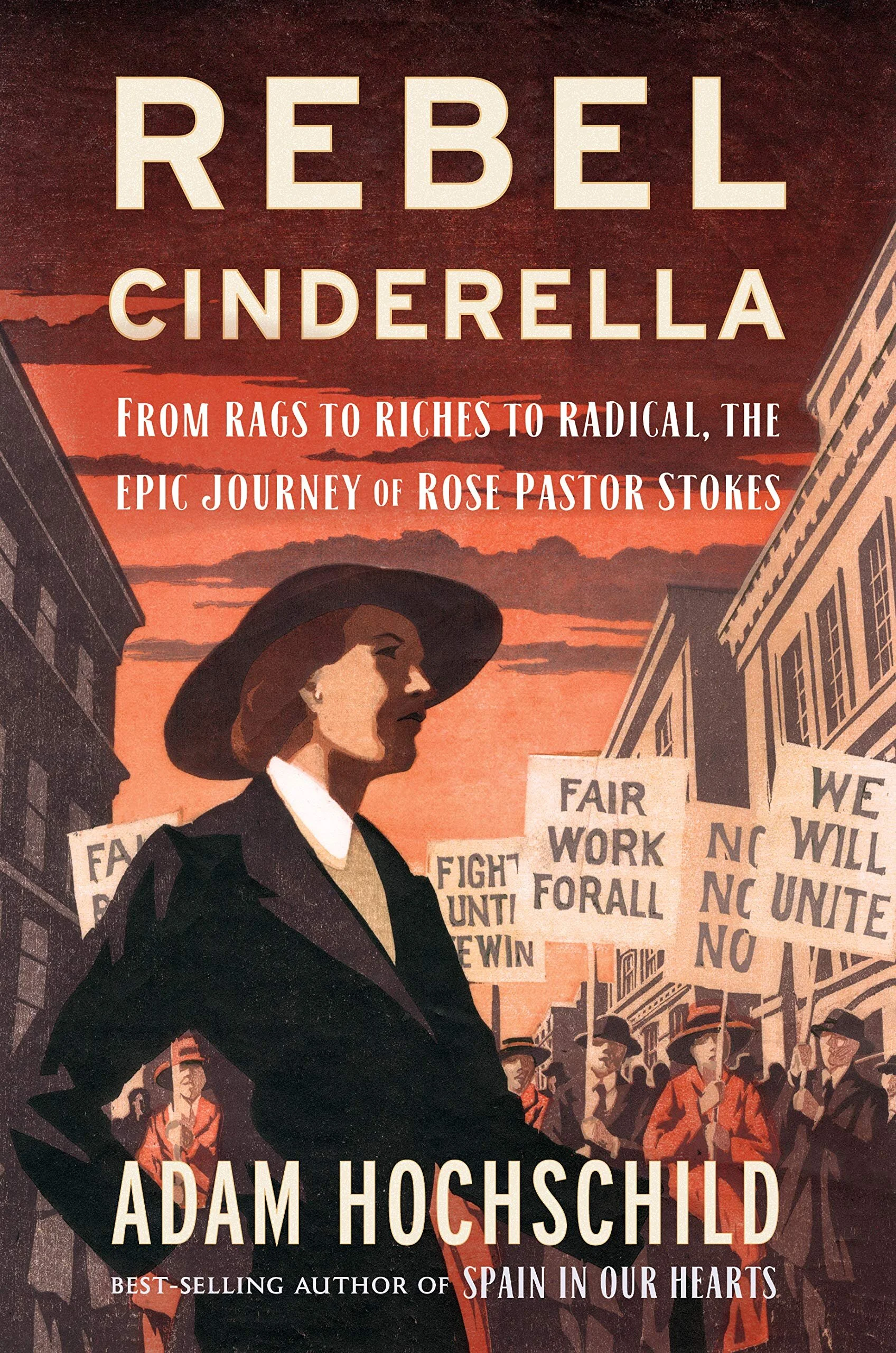Rebel Cinderella by Adam Hochschild
/Rebel Cinderella: From Rags to Riches to Radical, the Epic Journey of Rose Pastor Stokes
by Adam Hochschild
Houghton Mifflin Harcourt, 2006
Cinderella lives in unjust servitude at the beginning of the fairytale, but her fortunes change when she attracts the attention of a prince who makes her his bride. In the book Rebel Cinderella: From Rags to Riches to Radical, the Epic Journey of Rose Pastor Stokes, acclaimed author Adam Hochschild presents the biography of a Rose Pastor Stokes, a real-life Cinderella who transformed from an early-twentieth-century impoverished Jewish refugee to the wife of James Graham Phelps Stokes, one of America’s wealthiest patricians. Instead of merely becoming a princess, Rose Pastor Stokes used her elevated position to become an important national activist for progressive causes, from the labor movement to the quest for the legalization of birth control, from Socialism to more radical approaches--even when her wealthy husband disapproved.
Although the author suggests that Rebel Cinderella is fundamentally the story of a marriage, Hochschild paints a vivid portrait of the rise (and ultimate demise) of radical reform movements during the earliest decades of the twentieth century in the United States. During that era, the gap between rich and poor was larger than ever before. At the same moment, the government spent less than half a percent of the nation’s gross domestic product to support those in need. Many activists on the left believed a social revolution was coming—a revolution which would upend traditional divides of class, race, and gender. The relationship between Rose and Graham promised to be a model of that healing: a marriage between Jew and Christian, between immigrant and native son, between rich and poor. The American public was fascinated by the story of their union.
Rose Pastor met Graham Stokes at one of New York’s settlement houses, places designed to provide support services for the poor. The two were charmed by each other, despite their differences. Graham’s involvement in the settlement house movement grew out of his belief in social uplift and his feeling of noblesse oblige. “Graham thought of himself as a reformer,” writes Hochschild, “not a revolutionary.” After he married Rose, Graham moved to the left politically. Together they joined the Socialist Party, began to lecture publicly, and helped found the Intercollegiate Socialist Society to inspire college and university students to become involved in the movement. Graham even wrote his “darling mother” that he doubted whether she “recognized the injustice of the system which provides you with your great income at the expense of others.” Graham’s increasing involvement in leftist politics mirrored a step many Americans reformers were taking. Soon, Rose and Graham were friends and colleagues with other activists, including Emma Goldman, Eugene V. Debbs, Margaret Sanger, W.E.B. Du Bois, Big Bill Haywood, John Reed, and Upton Sinclair. For a time, their activities seemed to promise that a better future was coming.
The American Left began to come apart at the seams as World War I loomed on the horizon. Many socialists were opposed to war, believing that workers should unite in international solidarity against millionaire capitalists. Female activists, including Rose Pastor Stokes, were especially involved in pacifist organizations. Graham Stokes broke ranks with his wife and their radical peers and instead supported US involvement in the war. “He identified much less with his fellow socialists than with the East Coast elite he had come from,” writes Hochschild. “In Graham’s growing enthusiasm for the war, he was very much a man of his class.” Rose herself was even more direct, stating that Graham had “reverted to type.”
In addition to believing in the necessity of military engagement, Graham was disturbed that his wife’s charismatic leadership had outshone his own accomplishments. In the face of war, Graham’s discomfort with Rose’s success increased further. After all, as Hochschild points out, “Wasn’t going to war a measure of national virility?” The marriage between Rose and Graham, and the dream of a coming revolution to end injustice, was starting to unravel. Increasingly, the nation considered leftists unpatriotic and dangerous. Instead of being the media darling she was when she first married Graham, Rose had become a pariah.
The title of this volume does a disservice to Hochschild’s thoughtful biography of Rose Pastor Stokes and her involvement in the American left. Her life was much more than a “rags to riches to radical” story. Even before she met Graham, she was an independent woman fighting for the lives of immigrant workers. In later years, she was willing to sacrifice not only her reputation but her financial standing and even her marriage in order to speak out against injustice. Rather than embracing a Cinderella change in her own fortune, Rose Pastor Stokes sought to overturn the whole system of inequality. Even if we might disagree with some of her tactics, this fine study offers us an inspiring example of passion and hope for the future.
—Hannah Joyner is an independent historian living in Washington, D.C. Her work includes Unspeakable: The Story of Junius Wilson and From Pity to Pride: Growing Up Deaf in the Old South. You can find her on BookTube at https://www.youtube.com/c/HannahsBooks .
